Well I got the case split and got the crank out. Here are a couple of pictures of what I found.
It looks like there are two holes in the geared RS flywheel that are filled with something. The piece that found it's way between the flywheels looks to be one of these plugs that somehow worked it's way loose. You can clearly see the other plug in the last picture at the top part of the pic. To the left and below is the hole where the other plug came from.
I haven't prodded the plug that is still in place, but the remains of the one that has come loose seems very soft. I thought it was aluminum, but is it possible that it is actually lead or something else soft that was added as balancing to the crank? It appears that the plugs are only on the geared wheel. All of the other flywheels just have the standard two holes that are empty.
Does anyone know if this is something that was done on early model crankshafts or if this is some sort of modification that was done at some point?
Sorry the images are turned. Not sure how to re-orient them. Hopefully you get the idea.
I am hoping to pick up a spare engine this weekend and everything inside the case looks completely unharmed, so my hope is that the crank in the spare engine will just drop right in and I'll be back on the road.
At this point, I am really just curious if anyone has seem this before.
Thanks for all of the interest and guesses. Aside from the broken engine part, this has been interesting.
 ), these are balancing holes cast at the factory and finish balanced by hand for the weight of the con rod, bearing & pin.
), these are balancing holes cast at the factory and finish balanced by hand for the weight of the con rod, bearing & pin.


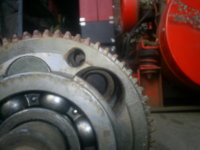
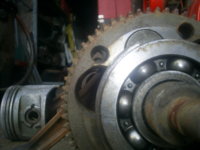


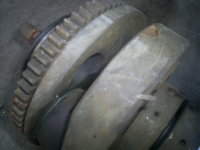


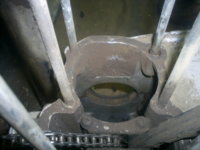

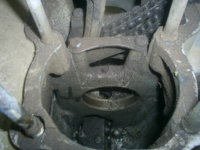






 The later model cranks did away with this, and we've seen no difference in vibrations honestly. I know that when we rebuild those particular flywheels, we heat up the lead to a molten state and "press" it back into the recesses in the flywheels.
The later model cranks did away with this, and we've seen no difference in vibrations honestly. I know that when we rebuild those particular flywheels, we heat up the lead to a molten state and "press" it back into the recesses in the flywheels.